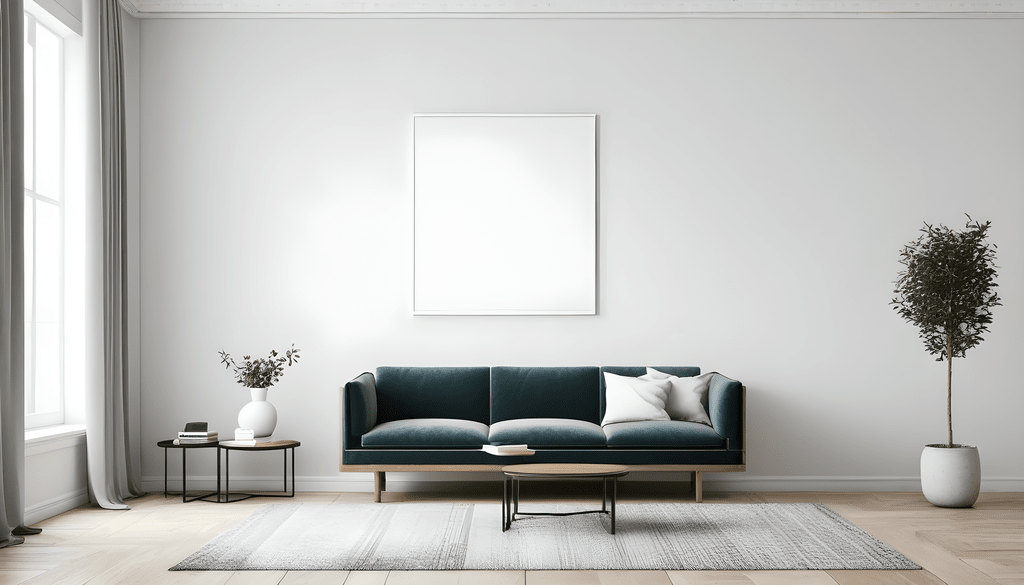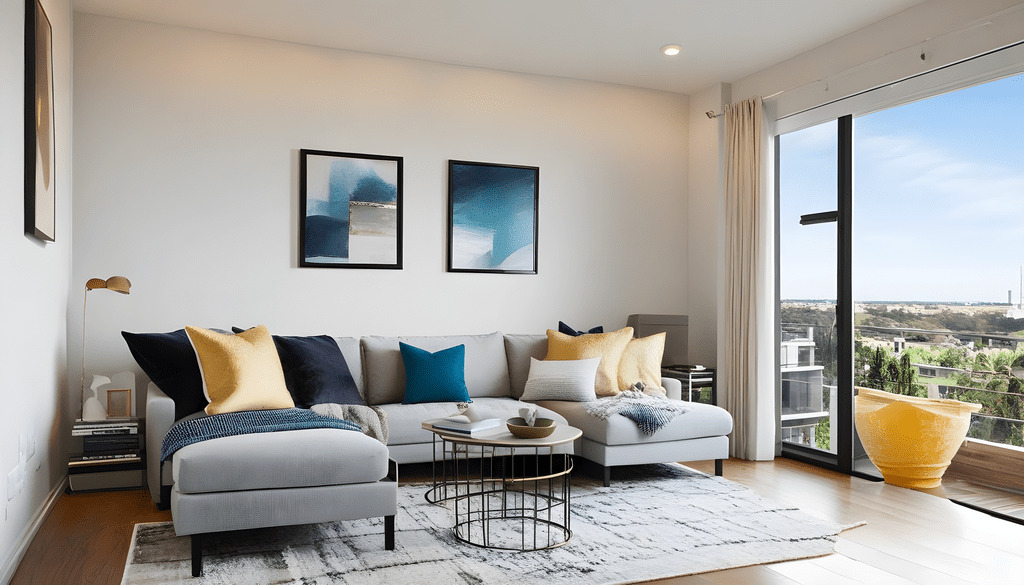Are you sick of having so many rooms in your large, open house that require constant upkeep and cleaning? It’s time to think about the advantages of making a small-space investment. There are several strong arguments in favor of adopting a more compact lifestyle and to invest in a small living space, even though the thought of downsizing may seem intimidating.
Financial benefits of living in a small space
Relocating to a smaller home has major financial advantages. First of all, less time and money are spent on upkeep and cleaning while living in a smaller apartment. You can spend more time doing the things you enjoy rather than always cleaning when there are fewer rooms to take care of. Additionally, because they use less energy to heat and cool, compact homes usually have cheaper utility expenses. Over time, this can result in significant savings.
In addition, the cost of compact dwellings is frequently lower than that of larger ones.
They are therefore a desirable choice for people who want to spend less money and put it toward other aspects of their lives. Whether you’re downsizing in retirement or buying a home for the first time, a compact living area might be a wise economical decision.
Finally, tiny houses may provide a more cost-effective way to enter coveted cities. You can have the comfort of living in a bustling metropolis and possibly save money on transportation and commute expenses by opting for a smaller living space. This can lead to a plethora of experiences and opportunities that would not have been possible in a larger, more costly home.
Environmental advantages of a small living space
Purchasing a little home helps the environment as well as your pocketbook. Since smaller dwellings require less resources to create and maintain, they have a smaller ecological footprint. Their lower energy use for heating and cooling leads to a decrease in greenhouse gas emissions. Opting for a smaller residence can help ensure a more sustainable future.
Furthermore, living in a tiny place can encourage a more environmentally conscientious way of life. When you have less room, you’re more likely to live a minimalist lifestyle, emphasizing quality over quantity and cutting back on wasteful spending. Reduced waste and a lower carbon footprint may result from this.
Additionally, residing in a smaller home inspires you to use your imagination and come up with fresh ideas for sustainable living. Making your modest living space eco-friendly can involve anything from using renewable energy sources to installing energy-efficient appliances. You may contribute to protecting the environment for coming generations by adopting a more compact lifestyle.
Simplified lifestyle and minimalism

The chance to embrace simplicity and simplify your life is among the biggest benefits of purchasing a tiny living space. Downsizing can offer a welcome shift in a world where material goods and relentless consumerism are the norm. Your living space will become more purposeful and orderly if you simplify and own fewer possessions.
Living in a limited space compels you to make sacrifices and only hold onto things that genuinely enrich your life. De-cluttering may be a freeing process that results in less stress and more serenity. You can put more emphasis on relationships, experiences, and personal development rather than becoming overwhelmed by the never-ending acquisition of goods.
Living in a smaller place also makes you more conscientious about the things you buy. When you have less room, you are more selective about the things you bring into your house and make sure they all have a purpose and make you happy. A more deliberate and contented lifestyle as well as wiser spending practices can result from this mentality change.
Creative and efficient use of space
Making the most of every square inch is necessary while living in a limited area. It can be quite gratifying even though it can initially appear difficult. Your desire to make the most of available space pushes you to come up with creative storage solutions.
Improving storage in a small living area can be done in a lot of different ways. Making use of vertical space by installing cabinets and shelves on walls can have a big impact. Additionally, you may increase functionality without losing design by investing in versatile furniture like foldable tables or mattresses with built-in storage.
Adopting organization strategies that keep your possessions neat and accessible is another successful tactic. You may maximize the space in your small living area by using a variety of equipment, such as closet organizers and under-bed storage containers.
Tips for maximizing storage in a small living space
- Invest in pieces of furniture like coffee tables and ottomans that have built-in storage.
- Store seasonal clothes or other items you don’t use often in under-bed storage containers.
- To make the most of the space in your closet, install closet organizers.
- To make it simple to see what’s within each container, use clear storage containers.
- Take into account making use of the area behind doors by hanging organizers or adding hooks.
- Choose multipurpose furniture, like a dining table that can be used as an office or a sofa bed.
- Store items that are not used often by making use of the space above kitchen cabinets.
- Establish specific storage areas for various item categories to maintain organization and accessibility.
- Utilize the vertical space by mounting shelves on the wall.
Small living space design ideas

It takes imagination and thoughtful attention to design a modest living area. Here are some decorating suggestions to maximize your small space:
- Use light colors to give the impression of more space and to give the space a more airy, open feel.
- To let light in and create an air of openness, use furniture with legs.
- Add mirrors to the room to make it appear larger and to reflect light.
To achieve a clutter-free look, use furniture with streamlined designs and clean lines. - Make the most of natural light by using sheer curtains and leaving windows uncovered.
- Use area rugs or various lighting strategies to divide your small living space into discrete zones.
To increase utility without compromising space, think about adding built-in furniture or creating specialized storage solutions. - To create flexible areas that can be readily modified as needed, use room dividers or curtains.
- Use greenery and plants to infuse your tiny living area with vitality and freshness.
Downsizing and decluttering tips
Decluttering and downsizing can be a daunting task, but done well, it can also be a fulfilling and life-changing experience. The following advice will assist you in navigating the process of downsizing:
- Give yourself lots of time to go through your possessions, starting early.
- Approach the task methodically, focusing on a single area or category at a time.
- Divide things into groups, such as dispose, sell, donate, or retain.
- Be sincere with yourself and part with possessions that no longer make you happy or fulfill a need.
- Take into account digital substitutes for tangible objects, such scanning vital records or digitalizing priceless images.
- Sell things you no longer need by using local consignment shops and internet marketplaces.
- Give gently used goods to underprivileged local charity or groups.
- Seek out assistance from loved ones or friends who can offer direction and sustain your motivation.
- Adopt a minimalist mindset and concentrate on the happiness and freedom that come with having fewer possessions.
Overcoming challenges of living in a small space
There are obstacles associated with living in a small place, but they can be addressed with careful planning and organization. The following are some typical problems and solutions for them:
- Inadequate storage: Make the most of every square inch of your room by investing in furniture with built-in storage and using vertical storage options.
- Limited privacy: Divide different portions of your house using furniture, drapes, or room dividers to create private spaces.
- Limited area for entertaining: Make the most of your space by hosting parties in outside spaces like patios or balconies.
- Small workspace: Turn a small nook into an office space or use a folding desk to create a dedicated workspace.
- Feeling claustrophobic? Make use of design elements like open furniture, mirrors, and light colors to maximize natural light and provide the impression of space.
Conclusion: Is a small living space right for you?
Purchasing a modest home has several advantages, such as reduced expenses, better environmental effects, a more straightforward lifestyle, and innovative use of available space. Even though there might be some adjustment needed, the benefits greatly exceed the difficulties at first. Accepting a smaller living area will help you save money, simplify your life, and reap the benefits of a more deliberate and condensed living space. So, think about the benefits of downsizing and purchasing a tiny living space if you’re sick of the upkeep and costs associated with owning a huge house. It could be the much-needed shift that you’ve been waiting for.
